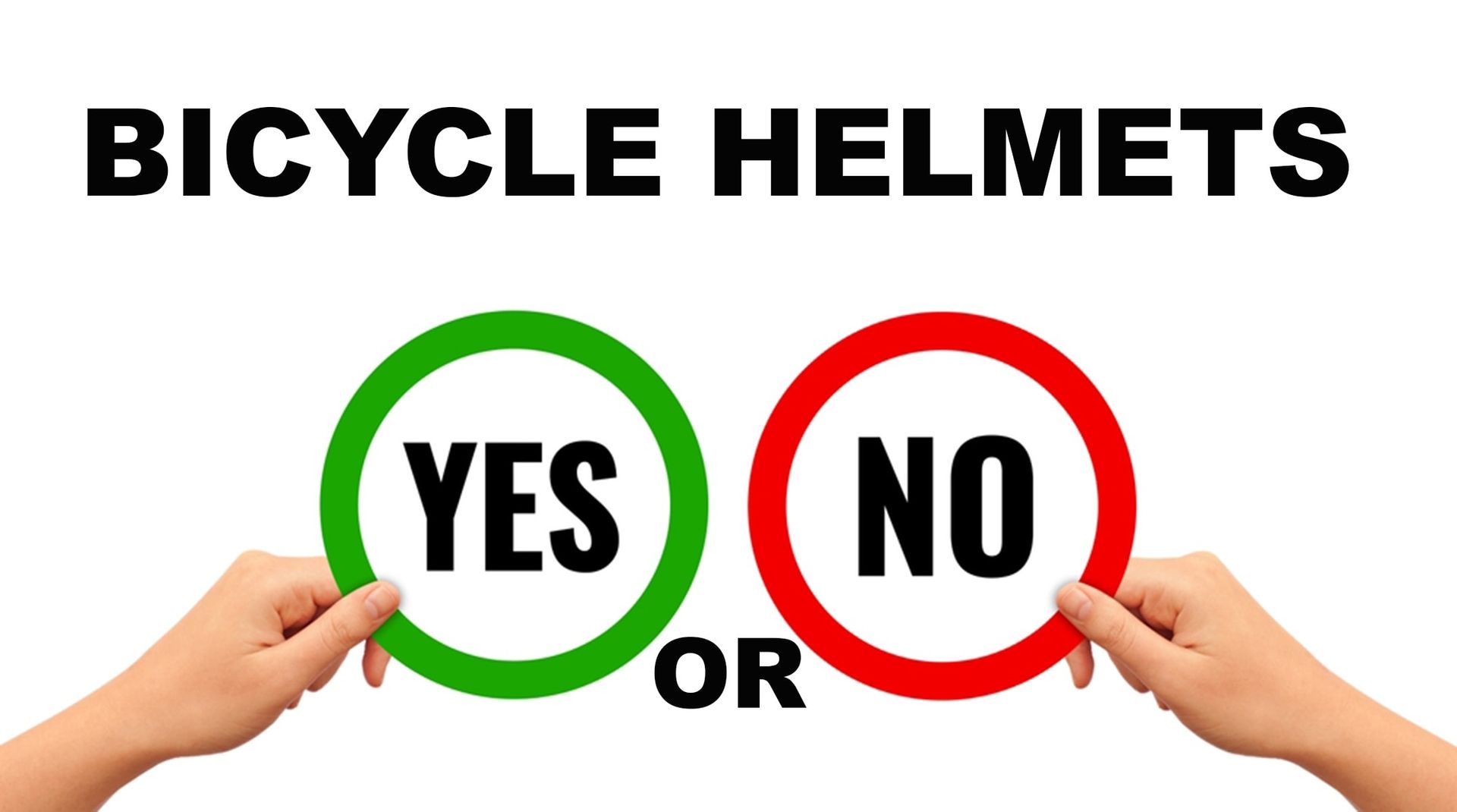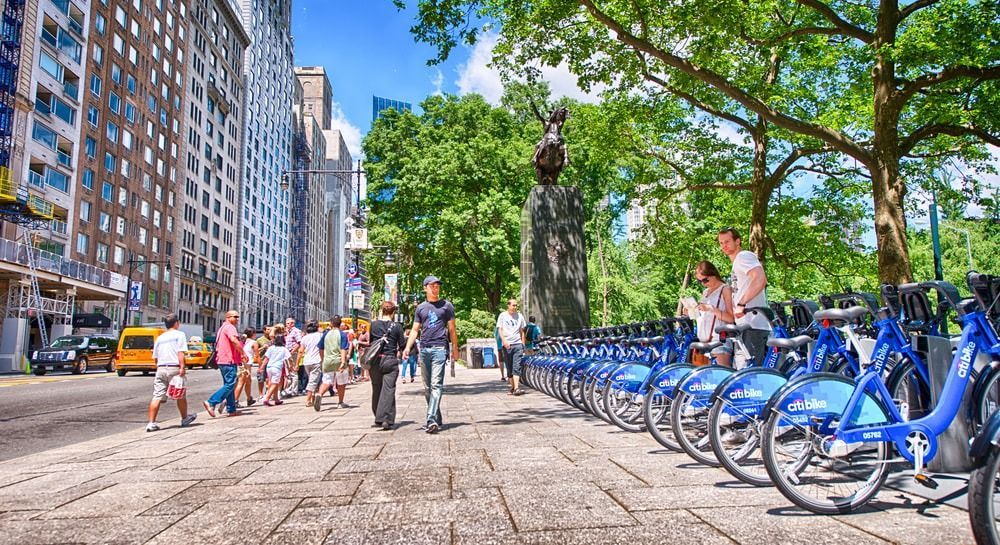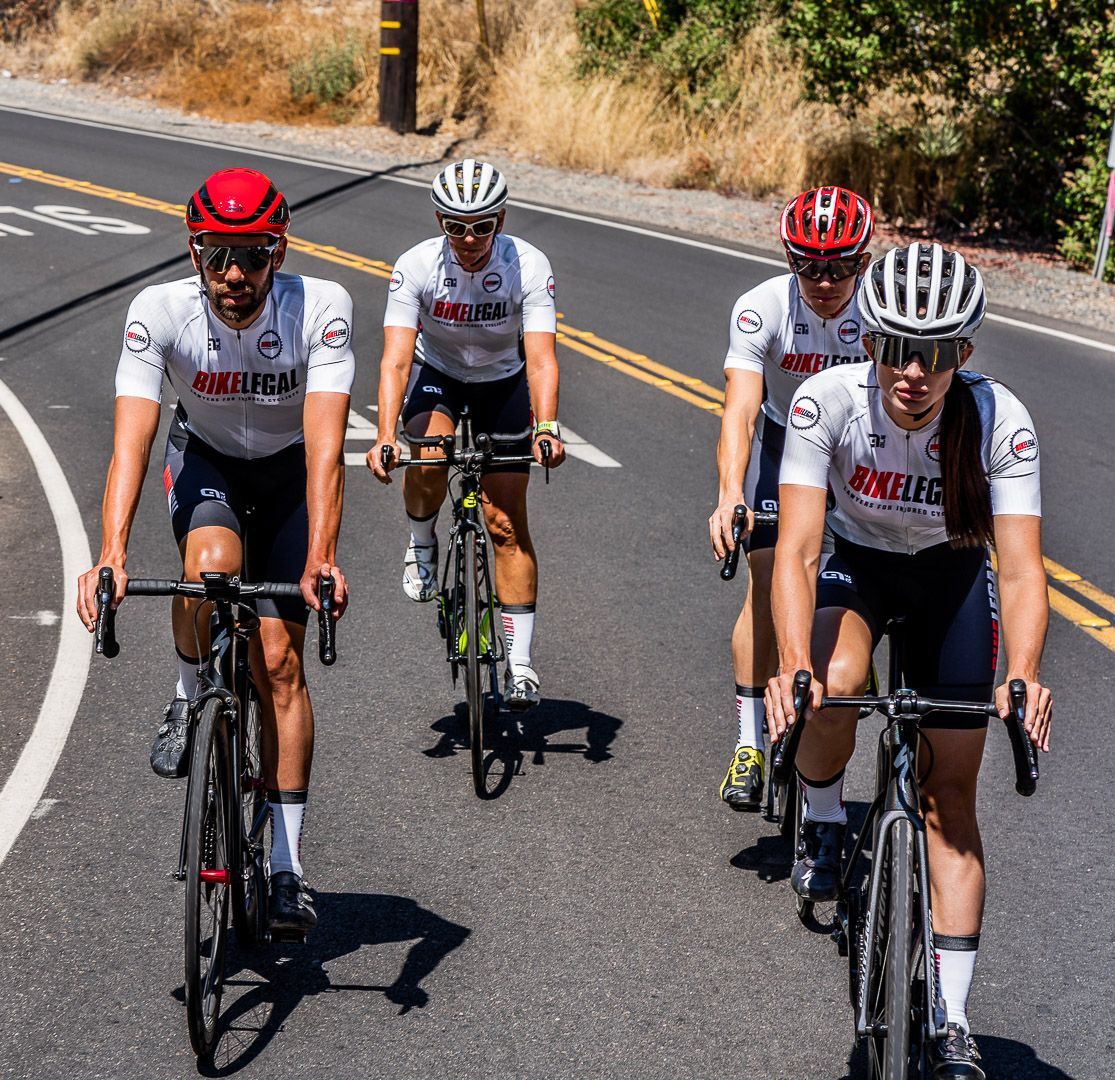The Bicycle Helmet Law Debate: Why the U.S. Lacks a National Mandate
Follow us on
social media!
Why Are Helmet Laws So Different Across the U.S.?

In the U.S., helmet laws differ by state and sometimes by city, with no federal mandate. While some areas enforce strict helmet use across all ages, others have minimal or no requirements.
Each state determines its rules based on local culture, safety priorities, and public opinion. This variation means cyclists crossing state and city property or county lines may face different regulations, potentially leading to confusion or fines.
Why Go Without a Helmet? Understanding the Risks
Helmet use, regardless of state law, can be life-saving. The NCBI reports that helmets reduce the risk of serious head injury by 63 to 88% in crashes. States with helmet laws often report fewer cycling-related head injuries. At Bike Legal, we advocate for helmets as essential safety gear, knowing firsthand how they can reduce life-altering brain injuries.
Table of Contents
- Why Bicycle Helmet Laws Vary by State
- State-Specific Bicycle Helmet Laws and Age Requirements
- E-Bike Helmet Rules by State
- Strict vs. Minimal Helmet Requirement States
- Benefits of Nationwide Bicycle Helmet Laws
- Arguments Against Nationwide Bicycle Helmet Laws
- How Bicycle Helmet Laws Impact Bike-Share Programs
- Do Bicycle Helmet Laws Burden Low Income Cyclists?
- Case Study: The New York City Bicycle Helmet Law Debate
- Bicycle Helmet Effectiveness and Ethical Arguments
- Why Bicycle Helmet Mandates Could Discourage Cycling Participation
- The Role of Advocacy Groups in the Bicycle Helmet Debate
- Current Trends and Future of Bicycle Helmet Legislation
1. Why Bicycle Helmet Laws Vary by State

Helmet laws in the U.S. vary widely due to a mix of historical, political, cultural, and geographic factors. This decentralized approach allows each state to set its own rules, but it also creates inconsistencies for cyclists.
Historical Context
The first bicycle helmet laws appeared in the late 1980s, with California and New York leading the way to protect young riders. By the early 1990s, more states followed, but most focused only on minors. To this day, only 21 states and Washington D.C. have helmet laws for children, and very few have laws for adults. Resistance to helmet laws for adults stems from concerns about personal freedom, cycling participation rates, and the role of local government in personal health decisions.
Local Factors Influencing Helmet Rules
- Political Landscape: States that prioritize individual freedoms, like Idaho, often resist helmet mandates, while health-conscious states like Washington are more supportive of helmet laws.
- Cultural Attitudes: States with strong cycling communities, like Oregon and Colorado, often encourage helmet use through education, even if laws are not strict.
- Geographic Factors: Urban areas with higher cyclist traffic (like California and New York) are more likely to have stricter helmet laws, while rural areas with fewer cyclists, like Montana or Wyoming, tend to avoid mandates.
Federal vs. State Control: Why Helmet Laws Vary
In the U.S., helmet laws are state-regulated, unlike seatbelt laws, which have federal guidelines. The federal government leaves helmet regulations to states, allowing them to address local needs.
This division reflects federal and state power dynamics. While the federal government manages broad safety issues (e.g., seatbelt laws), bicycle helmets are considered a local matter. This state-led approach lets each state tailor electric bicycle helmet laws, but creates inconsistencies. Cyclists may encounter different rules across state lines and local bike helmet laws elsewhere, leading to confusion.
2. State-Specific Helmet Laws and Age Requirements

Helmet laws vary significantly across states, often depending on age, bike type, and local priorities. Here’s an overview of these differences.
Age-Based Requirements for Helmet Use
Helmet laws in the U.S. mostly target minors due to their higher injury risk.
- Under 18: Most states, like California, New Mexico, and West Virginia, mandate helmets for cyclists under 18.
- Under 16: States like New York and Florida only require helmets for minors under 16.
- Under 12: A few states, including Delaware, limit helmet requirements to children 12 and under.
Since these age-based laws differ widely, it’s essential to check your state’s requirements, especially when traveling with young cyclists.
3. E-Bike Helmet Rules by State
With e-bikes surging in popularity, many states have added specific helmet requirements for riders of these faster, motor-assisted bicycles.
- Class 3 E-Bikes: These bikes can reach speeds of up to 28 mph, and most states, including California, require helmets for all Class 3 riders.
- Class 1 & 2 E-Bikes: Many states only require helmets for younger riders. For example, Oregon requires helmets for e-bike riders under 16.
Local Ordinances: Some cities impose additional rules in high-traffic zones or shared urban paths, so always verify local requirements.
Read Next: Everything You Need to Know About E-bikes (Electric Bicycles)
4. Strict vs. Minimal Helmet Requirement States
- Strict Requirement States: California, Massachusetts, and New Jersey have comprehensive laws. For example, California requires helmets for all minors and all Class 3 e-bike riders, with fines for non-compliance, especially in urban areas.
- Minimal Requirement States: In Idaho, Illinois, and Wyoming, helmet use is largely a personal choice, with no statewide laws mandating it.
5. Potential Benefits of Nationwide Bicycle Helmet Laws

A national helmet mandate could improve public safety, reduce healthcare costs, and simplify compliance.
Here’s why a consistent helmet law across the U.S. could make a difference.
- Public Health and Safety: Helmets reduce brain injuries by up to 88%, according to the CDC. A national law could reduce injury-related medical costs.
- Standardization and Clarity: Uniform laws eliminate confusion for cyclists traveling between states.
- Economic Impact: Reducing head injuries means lower healthcare costs for both individuals and the system as a whole.
Read Next: The Ultimate Bicycle Helmet Guide for Cyclists
6. Arguments Against Nationwide Helmet Laws

Though helmets offer safety benefits, many argue that a national mandate could deter cycling and limit personal freedom. Here’s why a universal rule may not suit everyone.
- Personal Freedom: Opponents argue cyclists should have the right to choose whether to wear a helmet.
- Reduced Cycling Participation: Mandatory helmet laws have been shown to reduce cycling participation in cities like Melbourne, Australia.
- Focus on Infrastructure: Advocacy groups argue that increasing protected bike lanes and traffic-calming measures do more to prevent injuries than helmet mandates.
Examples from Low-Helmet, High-Safety Countries
Countries like the Netherlands and Denmark demonstrate that robust infrastructure can lead to safe cycling environments without mandatory helmet laws.
- The Netherlands: With only 1% of cyclists wearing helmets, the Netherlands has one of the lowest cycling injury rates worldwide. Investments in protected bicycle lanes and traffic-calming measures make cycling safer, reducing the need for helmets.
- Denmark: In Denmark, extensive bike lanes and low-traffic areas contribute to a safe cycling culture where helmets are largely unnecessary.
Key takeaway: High-safety, low-helmet countries show that infrastructure-focused solutions can be a viable alternative to helmet mandates, potentially offering a model for U.S. cycling safety.
7. How Bicycle Helmet Laws Affect Bike-Sharing Programs

Bike-sharing programs offer a convenient way to travel around cities, but helmet laws can complicate their usage. Most bike-share systems don’t provide helmets, leaving riders to either bring their own (not practical for spontaneous trips) or risk fines, which can deter casual users.
- Access Barriers: For users who need a quick, flexible option, mandatory helmet laws add a challenge. Without helmets available at docking stations, compliance becomes difficult, especially for tourists and occasional users who likely won’t carry helmets. This inconvenience limits bike-share accessibility, especially in cities with strict helmet mandates.
- Impact on Ridership: Research links helmet laws to decreased bike-share use. In Seattle, ridership dropped noticeably after helmet requirements were introduced, as many users found the hassle of bringing helmets impractical. Melbourne experienced a 44% drop in usage following a similar law, as riders chose other transportation options.
The Cost of Helmet Rentals for Bike-Share Programs
Complying with bicycle helmet laws by state also adds logistical and financial burdens for bike-share programs.
- Hygiene Concerns: Shared helmets often discourage users due to cleanliness concerns, the so-called “yuck factor.” This discourages casual riders who might otherwise use the service.
- Increased Operational Costs: Helmets require frequent cleaning, storage, and replacement. These tasks require staff and resources that add to bike-share expenses, making it difficult to provide helmets consistently across large urban areas.
The combination of access issues, decreased ridership, and additional costs presents significant challenges for bike-share programs in cities with strict helmet requirements, affecting their success and viability.
8. Do Bicycle Helmet Laws Burden Low-Income Cyclists?
Helmet laws, while intended to enhance safety, could financially impact low-income cyclists who rely on biking for affordable transport.
- Helmet Costs and Accessibility: Quality bike helmets can cost $30 to $200, which may be prohibitive for those on tight budgets. Many low-income areas also lack accessible stores offering affordable helmets, making compliance challenging and potentially discouraging cycling.
- Increased Transportation Costs: Helmet laws may push some low-income cyclists to switch to costlier options, like public transit or rideshares. For instance, a monthly transit pass in cities like Los Angeles or New York can cost over $100—significantly higher than biking. Switching to transit also reduces the flexibility and convenience that biking offers.
Solutions for Equity
To address these barriers, several cities offer free or discounted helmet programs:
- New York City: Distributes free helmets at community events.
- Washington D.C.: Partners with nonprofits in the "Street Smart" campaign to provide helmets.
- Portland, Oregon: Works with schools and community centers to offer helmets to children and low-income families.
Policy Recommendations:
- Helmet Vouchers: Issued through schools and community centers, redeemable at local stores.
- Subsidies: Incorporate helmet subsidies into public health budgets.
- Community Helmet Drives: Cities can hold regular drives, supported by local organizations, to distribute free helmets.
These efforts aim to make helmet laws more accessible and to prevent financial strain, ensuring that safety measures don’t disproportionately impact low-income cyclists.
9. Case Study: The New York City Bicycle Helmet Law Debate
New York City’s consideration of mandatory helmet laws, especially for bike-share users, has sparked debate over public safety and personal freedom in a densely populated, cycling-friendly area.
The Debate Overview
Concerns over cyclist injuries on NYC’s crowded streets prompted the proposal for mandatory helmets. While safety advocates argue this could prevent head injuries and promote safer biking, others worry such laws would discourage bike use, affecting both regular commuters and bike-share users.
This debate reflects the tension between public safety and personal choice in high-density cycling areas.
Safety Advocates vs. Cycling Advocates
- Safety Advocates: Argue that helmets are crucial for reducing traumatic brain injuries. With NYC’s high traffic density, they believe mandatory helmet use, especially for bike-share users, could lower injury rates and reduce emergency care strain.
- Cycling Advocates: Contend that mandatory helmet laws could deter people from cycling, harming NYC’s eco-friendly initiatives like Citi Bike. They argue that safer infrastructure, like protected bike lanes, would be a more effective way to prevent injuries without reducing ridership. Studies from cities like Melbourne support these concerns, showing helmet mandates can lead to lower bike-share use.
Concerns Over Discriminatory Enforcement
A critical aspect of the NYC debate is the potential for biased enforcement. Research indicates that helmet laws often result in more citations in low-income, minority communities. Civil rights advocates warn that this could exacerbate policing disparities.
- Advocate Concerns: To prevent targeting specific groups, some suggest focusing on educational campaigns or free helmet programs over fines.
Discriminatory enforcement risks add complexity to NYC’s helmet debate, raising concerns that mandatory helmet laws could disproportionately impact communities relying on affordable bike transportation.
10. Bicycle Helmet Effectiveness and Ethical Arguments
Effectiveness in Preventing Injuries
Research shows that helmets significantly reduce the severity of injuries, especially in urban areas with heavy traffic. Key findings include:
- Reduced Head Injuries: The NHTSA reports that helmets lower the risk of head injury by 60% and severe brain injury by 50%.
- Lower Fatality Rates: The CDC notes that helmeted cyclists are less likely to suffer fatal injuries, underscoring helmet importance in fast-paced urban areas.
- City Examples: Cities like New York City, which promote helmet use, experience fewer severe head injuries among cyclists.
These statistics highlight how helmet use can reduce the impact of crashes and prevent life-altering injuries, particularly in high-traffic environments.
Read Next: Bike Accidents Without Helmets: The Risks, Laws, & Tips
Ethical Justifications for Helmet Mandates
Helmet mandates align with public health ethics, focusing on injury prevention and harm reduction, much like seatbelt and speed limit laws. Key ethical principles include:
- Public Health Focus: The principle of beneficence supports helmet laws as they prevent injuries and reduce healthcare burdens, freeing up vital medical resources.
- Non-Maleficence: Helmet laws aim to prevent predictable harm. While they impose a minor limit on personal freedom, the significant reduction in injury risk justifies the requirement, similar to seatbelt laws.
By focusing on harm reduction, helmet mandates serve the public good and align with other established safety measures.
Comparison to Seatbelt and Speed Limit Laws
Helmet mandates are ethically and practically similar to seatbelt and speed limit laws, all designed to reduce harm in public spaces.
- Seatbelt Laws: Accepted as minor freedom restrictions for notable safety gains; helmet laws use similar reasoning.
- Speed Limits: Set to protect all road users, including cyclists. Helmet laws apply the same logic: simple measures to mitigate injury.
Key Takeaway: Like seatbelt and speed limit laws, helmet mandates strike a balance between individual freedom and public safety, aiming to reduce serious injuries and enhance collective welfare.
11. Why Bicycle Helmet Mandates Could Discourage Cycling Participation

Helmet mandates, though aimed at safety, may discourage cycling, potentially reducing safety for the remaining cyclists. Here’s why these laws can impact cycling participation and overall road safety.
Inconvenience for Short Rides
Biking offers convenience, especially for short urban trips, but helmet requirements can complicate quick errands.
- Casual Riders: For quick, spontaneous trips, the need for a helmet can feel unnecessary, deterring people from choosing to bike.
- Seattle Example: Seattle’s helmet law has been noted as a barrier to casual bike use, as many riders avoid the hassle of carrying a helmet for short rides.
For short trips, helmet mandates can feel burdensome, pushing riders to other transport options.
Negative Impact on Bike-Share Usage
Bike-sharing programs rely on ease, which helmet mandates can reduce, impacting ridership.
- Decreased Ridership: In Melbourne, Australia, where helmets are required, bike-share use dropped by 44%, with many users citing the helmet requirement as a deterrent.
- Barriers for Tourists and Casual Riders: Tourists and occasional riders are less likely to have helmets, making bike-shares less accessible and lowering usage.
Helmet mandates can reduce the practicality of bike-sharing, affecting accessibility for casual and tourist users and lowering program viability.
Safety in Numbers Principle
Lower cycling participation due to helmet mandates may reduce the “safety in numbers” effect, which helps keep roads safer for all cyclists.
- Increased Driver Awareness: High cyclist visibility encourages drivers to be more mindful, creating safer streets.
- Lower Accident Rates: Studies show that cities with more cyclists have fewer accidents. Reduced cycling rates may decrease driver awareness, potentially increasing accident risks.
Higher cyclist numbers improve road safety, but helmet mandates that deter participation may unintentionally reduce this benefit.
12. The Role of Advocacy Groups in the Bicycle Helmet Debate
Advocacy groups are influential in shaping views on helmet laws, with safety organizations pushing for mandates to reduce injuries, while cycling advocates emphasize infrastructure improvements and personal choice.
Safety Advocates for Helmet Mandates
Organizations like the National Safety Council (NSC), Insurance Institute for Highway Safety (IIHS), and American Academy of Pediatrics (AAP) support helmet mandates, highlighting their importance in preventing head injuries, especially for minors. These groups work with local governments to raise helmet awareness and promote community safety.
Safety advocates argue that helmet mandates are effective in reducing cycling injuries, particularly for younger bicycle riders too.
Cycling Advocacy for Choice and Infrastructure
Groups like the League of American Bicyclists, PeopleForBikes, and Transportation Alternatives oppose helmet mandates. They believe such laws discourage cycling and argue that infrastructure improvements—such as dedicated bike lanes and traffic control—offer safer, more lasting solutions without requiring helmets.
Cycling advocates view infrastructure improvements as a more effective approach to cycling safety, without discouraging participation.
13. Current Trends and Future of Bicycle Helmet Legislation

Helmet laws for cyclists are evolving as states reassess safety and accessibility. Some states are adjusting mandates, while federal agencies recommend helmet use without enforcing it.
Recent Changes to State Bicycle Helmet Laws:
- California: Continually revises helmet laws, recently adjusting requirements for minors on electric scooters, reflecting a shift towards encouraging adult cycling without mandates.
- Massachusetts: Considered expanding helmet laws to adults but faced opposition, with advocates urging focus on infrastructure over mandates.
- Florida: With high cycling injury rates, Florida continues to debate expanded helmet laws, weighing safety concerns against cycling growth.
Federal vs. State Trends: Federal agencies, like the National Transportation Safety Board (NTSB), recommend helmet use for minors and bike-share users, particularly in high-traffic areas. However, regulation remains a state matter, allowing states flexibility based on local cycling culture and infrastructure.
Long-Term Safety Solutions:
- Infrastructure Investments: U.S. cities are enhancing cycling infrastructure with protected bike lanes, bike paths, and traffic-calming measures, which studies show can reduce accidents by up to 50%.
- Vehicle Technology: Advances in vehicle collision-detection and cyclist recognition systems by companies like Tesla and Volvo further reduce accident risks, supporting cyclist safety without depending solely on helmet mandates.
Key Takeaway: Infrastructure upgrades and vehicle safety technology can protect cyclists effectively, potentially lessening the need for strict helmet laws.
Comparisons to Global Helmet Law Trends
Global trends show varying approaches to helmet laws, often shaped by infrastructure and cultural priorities.
- Australia: Enforces strict helmet mandates for all cyclists, which has led to high helmet use but also reduced cycling rates, highlighting potential drawbacks of universal mandates.
- Europe (Netherlands, Denmark): Prioritizes cycling infrastructure over helmet mandates, with extensive bike lanes and low-speed zones that provide safe environments with minimal helmet use. These countries achieve high safety levels and cycling rates, relying on infrastructure rather than strict helmet laws.
While countries like Australia mandate helmets universally, European nations achieve safer cycling through infrastructure, suggesting that well-designed roads can improve safety without mandatory helmet use.
The Importance of Helmet Use and Balanced Cycling Safety
The debate over helmet laws highlights two core aims: enhancing cyclist safety and ensuring cycling remains accessible for everyone. Here’s a recap of the key points:
- Benefits of Bicycle Helmet Mandates: Supporters stress that helmets significantly reduce head injuries and fatalities, particularly in busy, high-traffic areas. Helmet laws are viewed as straightforward public safety measures, especially valuable for younger and less experienced riders, and are ethically similar to seatbelt laws for their role in preventing harm.
- Arguments Against Bicycle Helmet Mandates: Opponents raise concerns about mandates deterring cycling, which can impact bike-share programs and casual riders, potentially diminishing cycling’s health and environmental advantages. They advocate for safety through infrastructure improvements rather than mandatory helmet use.
Bike Legal’s Position: Bike Legal is committed to cyclist safety and strongly encourages wearing a helmet on every ride, regardless of age or experience. Helmets offer essential protection in accidents, and we recommend them as a fundamental part of a safe cycling routine.
Bike Legal’s Commitment to Safety
At Bike Legal, we advocate for a safer, more inclusive cycling environment where every cyclist can ride with confidence. Our ultimate goal is zero fatalities and reduced injuries, particularly head injuries.
In case of a bicycle accident, knowing your legal options with the help of a bike accident lawyer can be vital. For cyclists seeking guidance on local helmet laws, road safety, or legal support after an accident, we’re here to help. Reach out for a free consultation at 877-BIKE LEGAL (877 245-3534) or contact Bike Legal for a FREE Consultation


